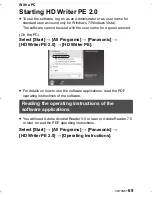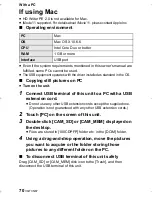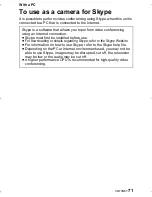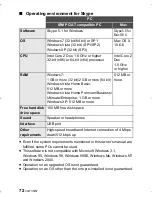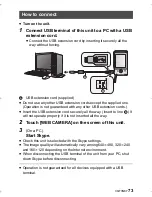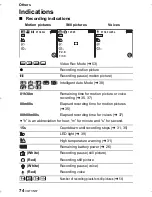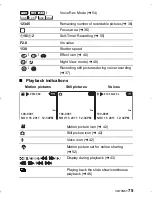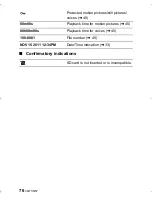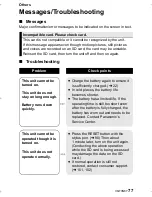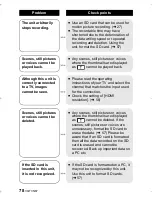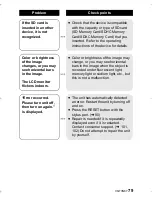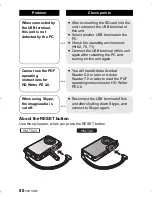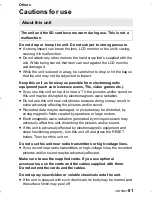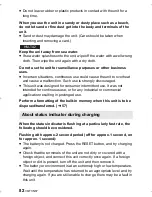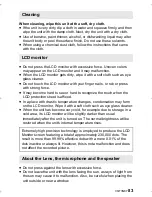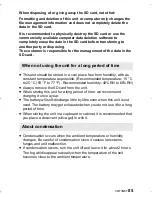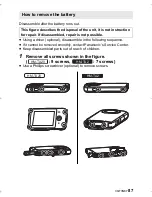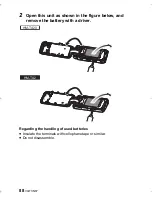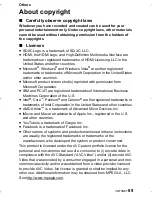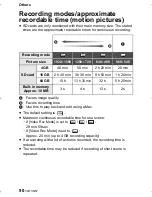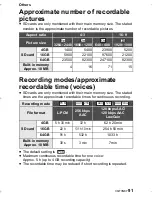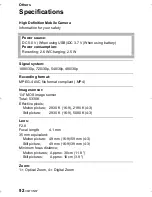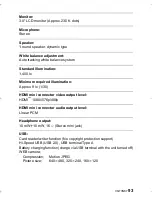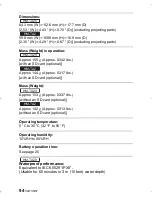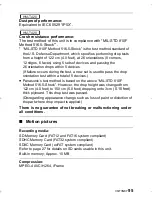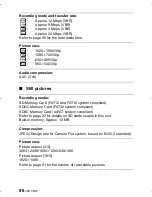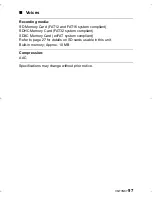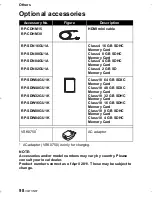
VQT3N87
83
When cleaning, wipe this unit with a soft, dry cloth.
≥
If the unit is very dirty, dip a cloth in water and squeeze firmly, and then
wipe the unit with the damp cloth. Next, dry the unit with a dry cloth.
≥
Use of benzine, paint thinner, alcohol, or dishwashing liquid may alter
the unit body or peel the surface finish. Do not use these solvents.
≥
When using a chemical dust cloth, follow the instructions that came
with the cloth.
≥
Do not press the LCD monitor with excessive force. Uneven colors
may appear on the LCD monitor and it may malfunction.
≥
When the LCD monitor gets dirty, wipe it with a soft cloth such as eye
glass cleaner.
≥
Do not touch the LCD monitor with your finger nails, or rub or press
with strong force.
≥
It may become hard to see or hard to recognize the touch when the
LCD protection sheet is affixed.
≥
In a place with drastic temperature changes, condensation may form
on the LCD monitor. Wipe it with a soft cloth such as eye glass cleaner.
≥
When the unit has become very cold, for example due to storage in a
cold area, its LCD monitor will be slightly darker than usual
immediately after the unit is turned on. The normal brightness will be
restored when the unit’s internal temperature rises.
≥
Do not press against the lens with excessive force.
≥
Do not leave the unit with the lens facing the sun, as rays of light from
the sun may cause it to malfunction. Also, be careful when placing the
unit outside or near a window.
Cleaning
LCD monitor
Extremely high precision technology is employed to produce the LCD
Monitor screen featuring a total of approximately 230,000 dots. The
result is more than 99.99% effective dots with a mere 0.01% of the
dots inactive or always lit. However, this is not a malfunction and does
not affect the recorded picture.
About the Lens, the microphone and the speaker
HM-TA20&TA2_P&PC-VQT3N87_mst.book 83 ページ 2011年4月22日 金曜日 午後12時11分

